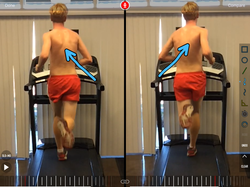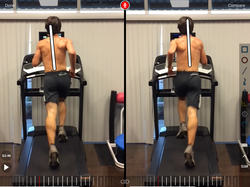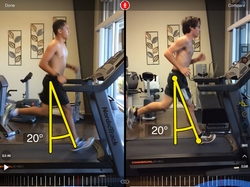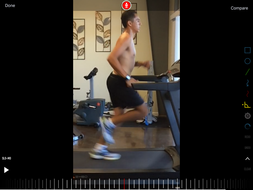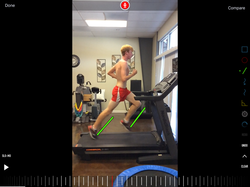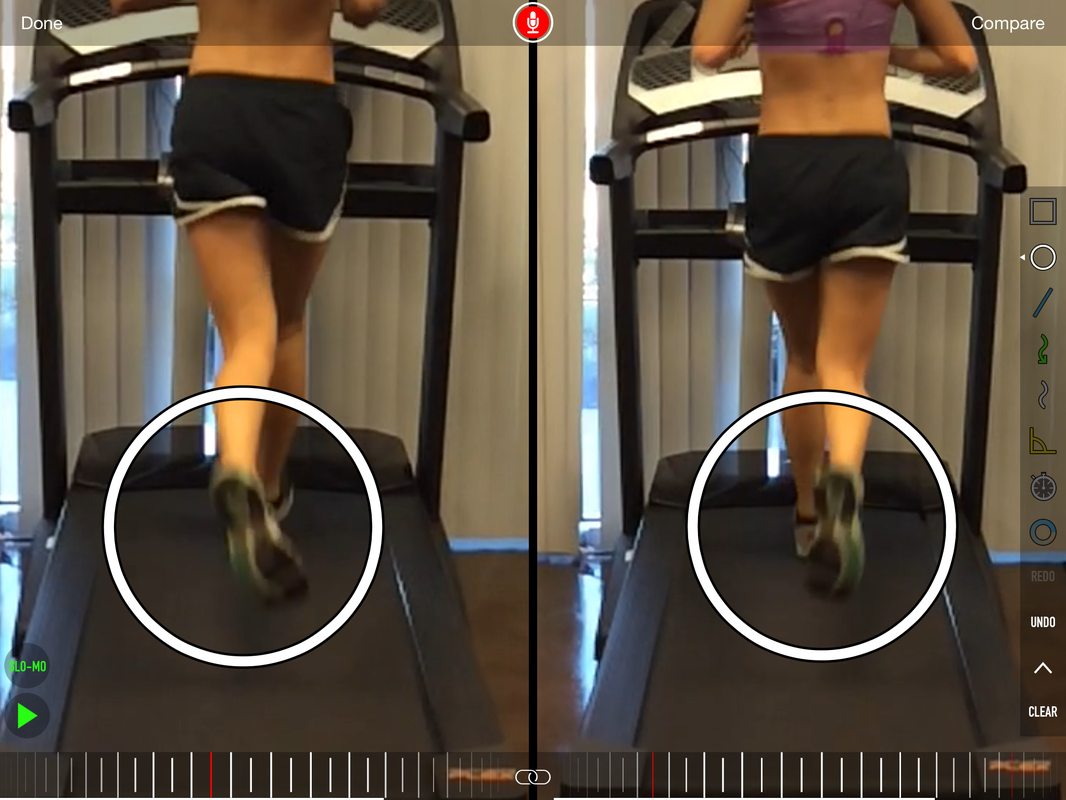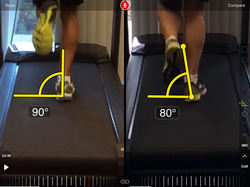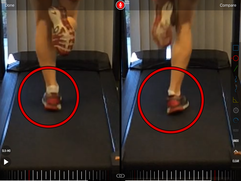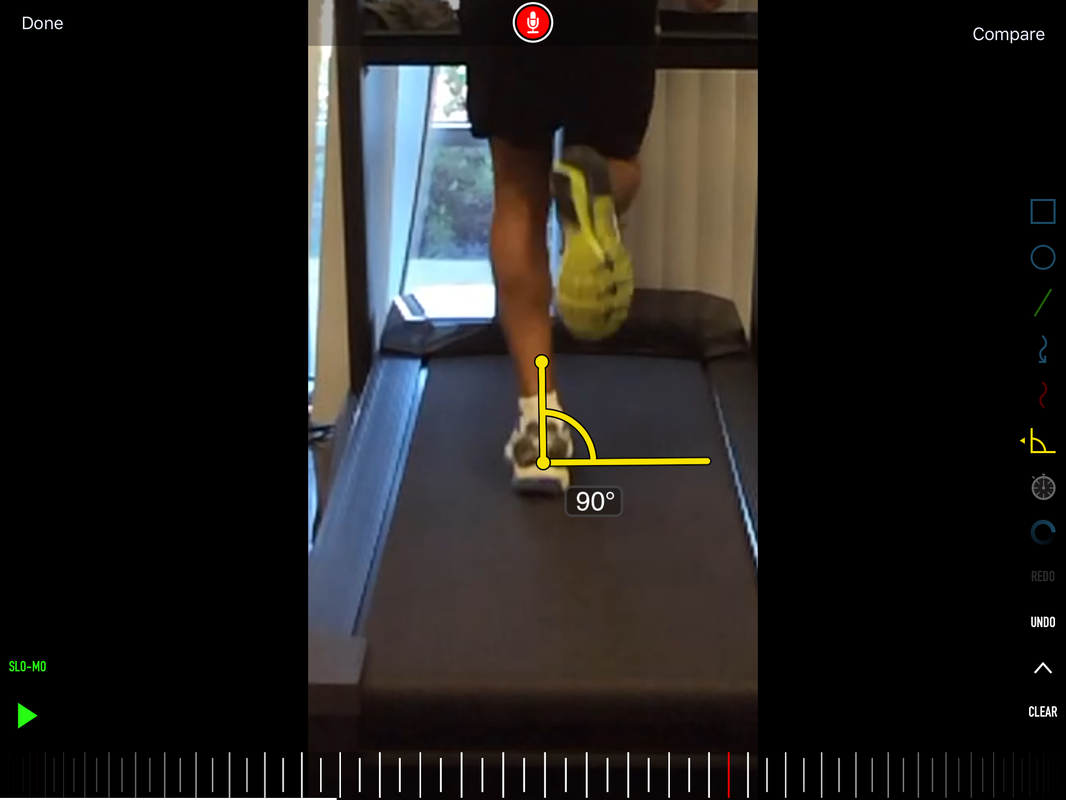|
This is a side by side comparison of what is called the "hip strike angle." It is the angle created between the point directly below the hip to where the foot makes contact with the ground. The ideal angle in the recreational runner is between 8-10 degrees. Both these runners are double the ideal. An increase in this angle typically increases the load on the leg when it makes contact and can create a host of injuries. Also typically coupled with an increase in this angle is a forward leaning trunk. This can be seen more readily on the runner on the right.
|
Captures the runner with good position of swing leg (right leg) as it passes his stance leg (left leg).
|
This shot shows a close to ideal "shin line." This shot is immediately before double float phase (when both feet are off the ground). We like to see that the shins are parallel from this point through the beginning of double float phase.
|
This side by side comparison of the same runner when initiating swing phase of each leg readily shows her struggle with the left leg. The right foot posture is ideal. The left foot is indicative of the left hip and femur positions. This runner tested with increased left hip internal rotation tightness and we easily see how it plays out while running.
|
|
Here is a side by side comparison of two different runner's right sided midstance position. The runner on the left exhibits a perpendicular orientation of the calcaneus (heel bone) to the ground, but the runner on the right collapses down into excessive pronation. The runner on the right came into the clinic with right hip and knee pain.
|
Side by side comparison of two different runners when in midstance right. The runner on the left has a perpendicular orientation of the calcaneus (heel bone) to the ground, where the runner on the right collapses into pronation.
|
Although only a subtle difference in this side by side comparison, the foot orientation of the runner on the left is better. As her heel rises off the ground, this position tells us that her foot has prepared for affective push off. Whereas with the runner on the right, the foot position informs us that he is still recovering from ground contact.
|
We were able to catch on film this runner's left to right discrepancy of pronation (foot collapsing beyond neutral). He exhibits slightly on the left, but has a clear dysfunction on the right.
|




